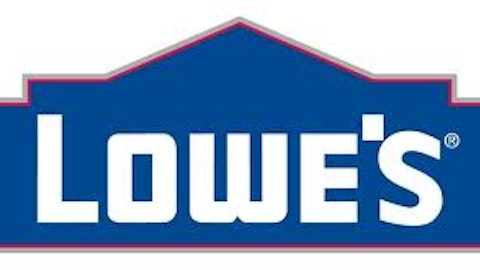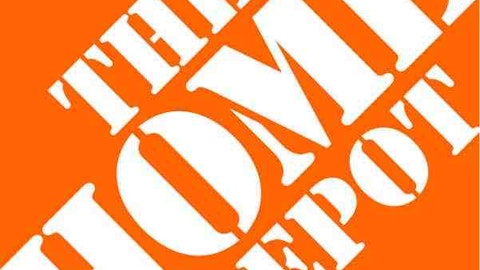In the world of building materials, people are starting to party like its 2004. That was when the last building boom drove demand and prices through the roof for critical construction materials like cement, copper, nails and plywood. Producers of these commodities benefited big time, before the boom turned bust and stayed that way for eight long years.

Now it’s starting to look like it did back then. The recent resurgence in new home construction, combined with a significant pop in home remodeling and repair projects, has sent demand and price for many of these commodities skyrocketing once again. Among the biggest beneficiaries so far are components that comprise most of a home’s structural panels, namely plywood and an alternative known as oriented strand board, or OSB.
According to Random Lengths, which has tracked the prices of these materials for nearly 70 years, the cost of structural panels is up 45% since last year this time. The spike is a result of growing demand, compounded by tight supplies. And the environment — which hasn’t been this healthy since ‘04 — is proving a boon to companies that produce these boards as well as those who sell them.
For those in the industry, it’s about time. The APA—Engineered Wood Association–says consumption of softwood plywood fell from 16.3 billion square feet in in the middle of the last decade to 8.6 billion in 2011, before edging up last year to 8.8 billion. The group projects consumption will continue to rise, hitting 11.1 billion by 2016.
Because producers closed mills and idled production during the downturn, supply of these structural panels — which are about one-third plywood and two-thirds OSB — has grown increasingly tight. And as demand continues pressuring inventory, prices are doing what prices do: according to Random Lengths, the composite price for structural panels soared to $511 per thousand square feet in mid-March from $351 one year earlier.
Major producers are selling everything they can ship out the door while ramping up production and even adding capacity to meet the burgeoning demand. Retailers report that the product is flying off the shelves. Here are five companies that stand to significantly benefit.
The Manufacturers
One-hundred-year-old Boise Cascade Co (NYSE:BCC), the second-largest producer of softwood plywood in the U.S., went public in February and has been on an uptrend because of the building boom. In early March it reported that fourth-quarter 2012 revenue in its Wood Products division was up 28% year over year, thanks to 28% higher plywood prices and 19% higher plywood volumes. The company projected that increased demand would continue throughout the year and is adding workers and shifts to meet it. Officials have, however, cautioned that prices could be volatile, with changes in production capacity and fluctuations in distribution channel inventory.
Competing building products supplier Louisiana-Pacific Corporation (NYSE:LPX) is one of the world’s largest producers of OSB, with significant penetration throughout North and South America. In early February it reported that 2012 OSB sales were up 50% over 2011, and its OSB division recorded a $124 million profit for the year after a $63.5 million loss. The company also projected OSB — which serves many of the same uses as plywood, such as roof decking, sidewall sheathing and floor underlayment — will capture more market share from plywood going forward.
Georgia-Pacific, the largest U.S. plywood producer, is a private company owned by Koch Industries since 2005. It recently announced it was investing $400 million over the next three years to boost lumber and plywood output and efficiency as demand continues to grow. In its plywood operations alone it is adding equipment that, beginning in the second-half of 2014, will increase capacity by 20%.
The Retailers
When building supplies are hot, home-improvement retailers see the benefits directly and quickly. Not surprisingly, then, The Home Depot, Inc. (NYSE:HD) and Lowe’s Companies, Inc. (NYSE:LOW) both out-performed the broader market over the past year. Executives at each company attributed much of their gains to moving increasing amounts of plywood and OSB out the door as the slack sales they saw during the recession gave way to pent-up demand and some emergency reconstruction activity.
The Home Depot, Inc. (NYSE:HD), which operates more than 2,200 stores, reported strong fourth-quarter 2012 sales and pegged them largely to the housing recovery and sales related to repairs in areas impacted by Hurricane Sandy. Lowe’s, with more than 1,700 stores, also reported excellent fourth-quarter sales. Its overall year-over-year increase of 1.4%, however, wasn’t as impressive as The Home Depot, Inc. (NYSE:HD)’s 4.6% gain.
Another player that has seen stronger sales with the expansion in construction and renovation activity is Lumber Liquidators Holdings Inc (NYSE:LL), a specialty retailer of hardwood flooring with 288 stores. In late February the company reported better-than-expected fourth-quarter 2012 results, with overall sales up nearly 21% year-over-year and same store sales up more than 13%. It projected continued strong sales in 2013, and announced it would open 25-35 new stores during the year to build on the positive momentum.
The Bottom Line
Demand for structural panels and other wood products is expected to remain strong as the year rolls on. New home construction continues to gain traction, and spending on repairs and remodels shows no sign of slowing.
On the contrarian side, negative impacts from global economic concerns and the federal budget sequester are possible. And with supply chasing demand for some time to come, there remains some concern that the industry will continue to fall behind and as a result miss out on sales that may never return.
Nonetheless, after the prolonged downturn, the news for these companies is good and likely to stay that way at least in the short- to mid-term.
The article Plywood: Foundation of the Building Boom originally appeared on Fool.com and is written by Howard Rothman.
Copyright © 1995 – 2013 The Motley Fool, LLC. All rights reserved. The Motley Fool has a disclosure policy.


